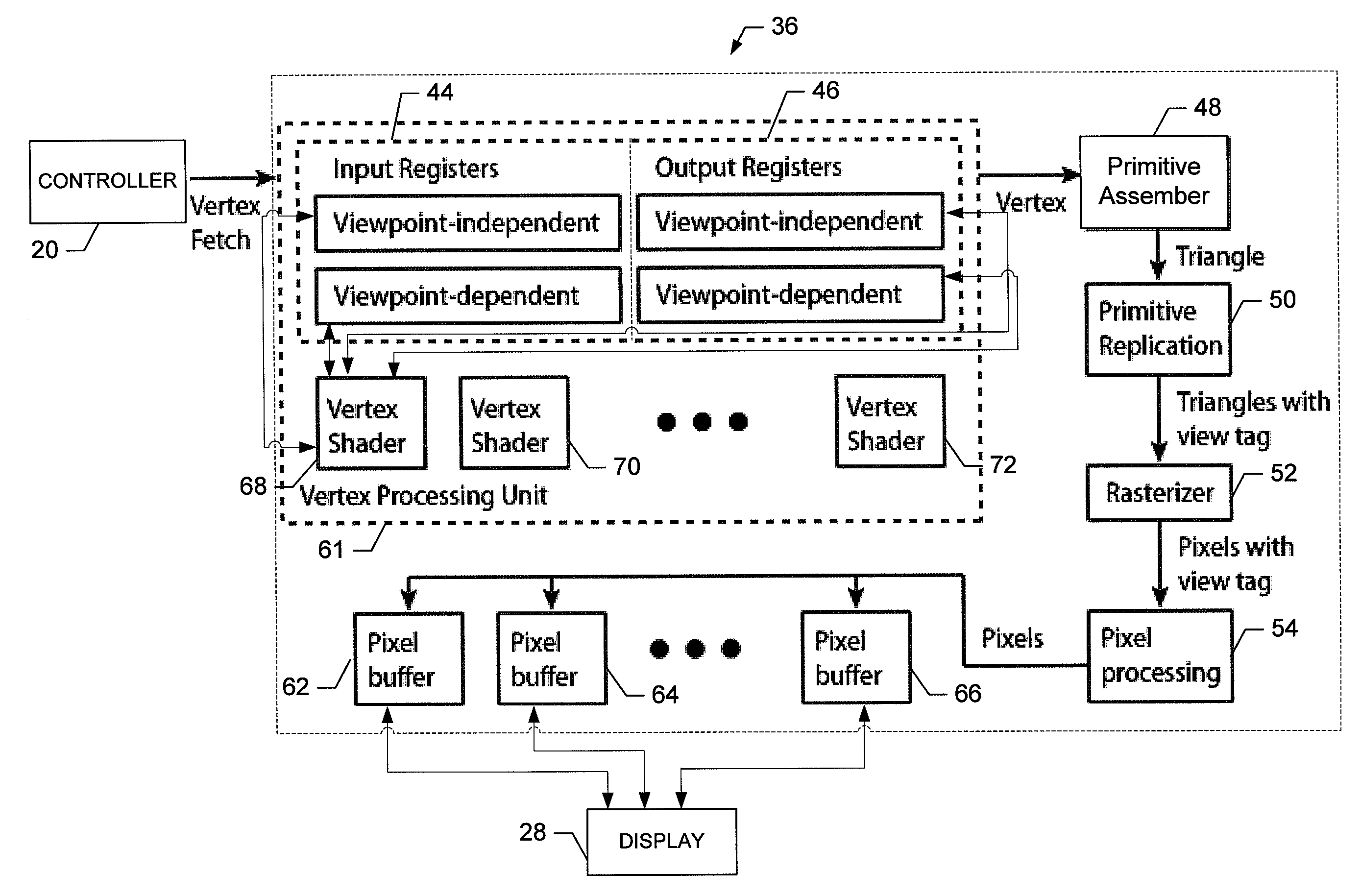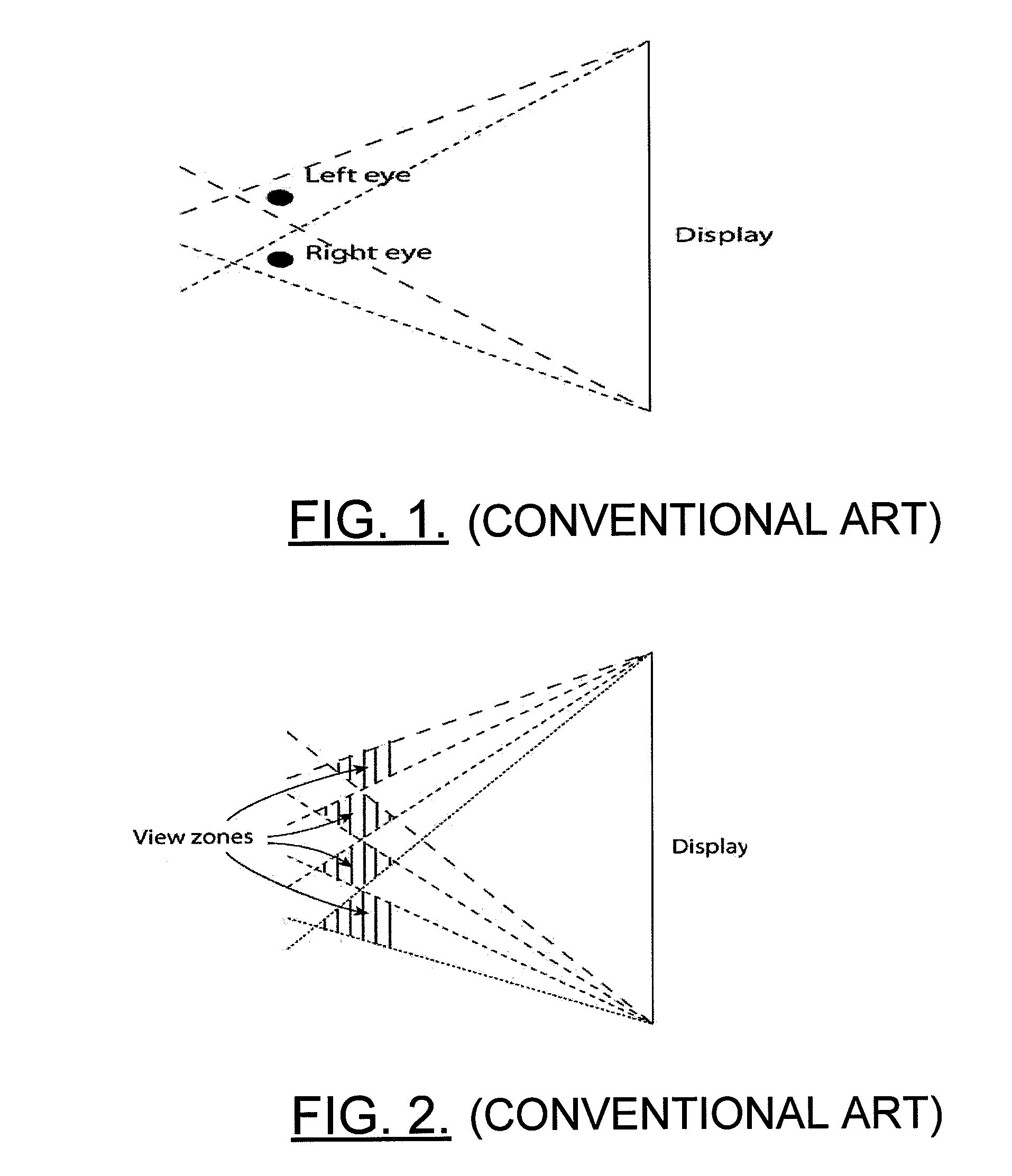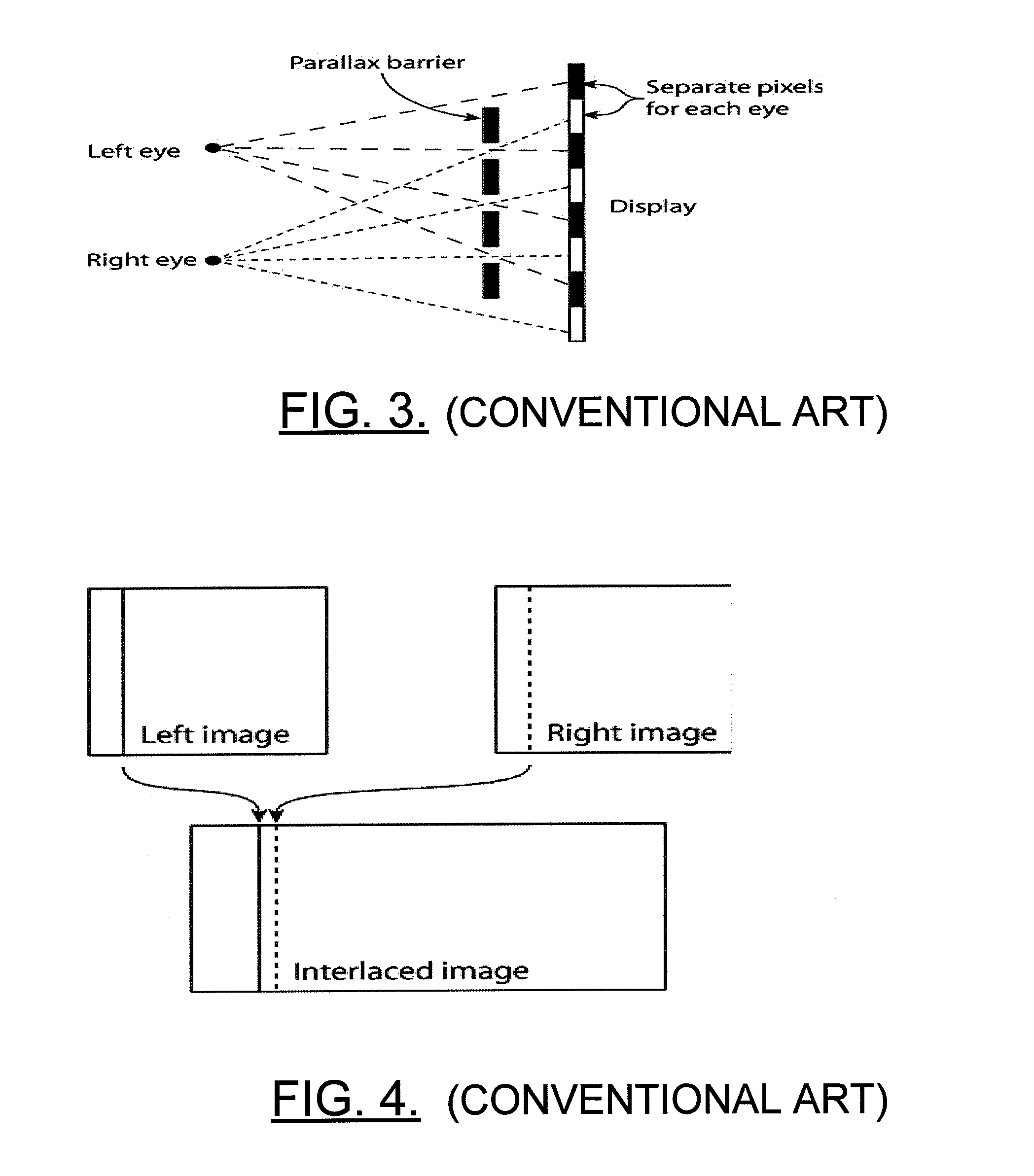Apparatus, method and a computer program product for providing a unified graphics pipeline for stereoscopic rendering
a technology of stereoscopic rendering and graphics pipeline, applied in the field of autostereoscopic display technology, can solve the problems of inability of human eyes to perceive three-dimensional information on two-dimensional displays that are incapable of conveying stereo parallax, limited display range, and low performance of the above-mentioned display range, so as to reduce computation, power consumption and bus bandwidth consumption of graphics applications.
- Summary
- Abstract
- Description
- Claims
- Application Information
AI Technical Summary
Benefits of technology
Problems solved by technology
Method used
Image
Examples
Embodiment Construction
[0047]Embodiments of the present invention now will be described more fully hereinafter with reference to the accompanying drawings, in which some, but not all embodiments of the inventions are shown. Indeed, the invention may be embodied in many different forms and should not be construed as limited to the embodiments set forth herein; rather, these embodiments are provided so that this disclosure will satisfy applicable legal requirements. Like reference numerals refer to like elements throughout.
[0048]As pointed out above, graphics rendering follows a highly pipelined rendering model as shown in the conventional GPU of FIG. 6. Currently graphics rendering frameworks such as OpenGL and DirectX, which is a graphics rendering framework developed by Microsoft Corporation, are geared for rendering from a single viewpoint, as described above. For instance, in the conventional graphics rendering pipeline of FIG. 6, a primitive, which may be, for example, a line, circle, point, polygon, ...
PUM
 Login to View More
Login to View More Abstract
Description
Claims
Application Information
 Login to View More
Login to View More - R&D
- Intellectual Property
- Life Sciences
- Materials
- Tech Scout
- Unparalleled Data Quality
- Higher Quality Content
- 60% Fewer Hallucinations
Browse by: Latest US Patents, China's latest patents, Technical Efficacy Thesaurus, Application Domain, Technology Topic, Popular Technical Reports.
© 2025 PatSnap. All rights reserved.Legal|Privacy policy|Modern Slavery Act Transparency Statement|Sitemap|About US| Contact US: help@patsnap.com



